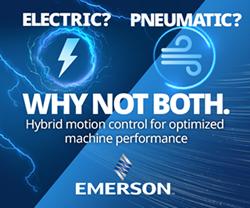The Blackbelt lets you 3D print really long items
Robotics, AI"‹"‹ and 3D printing could close UK's productivity gap
Apple starting US tech manufacturing fund with $1 bn
3D printing gets faster, with help from a vat of goo
3D-printing of glass now possible
New 3-D printing method creates shape-shifting objects
Belgian company takes 3D printing to chocolate
New Research Could Help Speed Up the 3D Printing Process
Staying Rich Without Manufacturing Will Be Hard
This 3D-Printer Uses Holograms for Super-Fast Printing
Beyond the Hype: What's Next for Industrial 3D Printing
CES 2017 - MarkForged 3D prints metal
Using 3D Printing, Lithography & Soft Robotics: New Prosthetic Hands Made for $50 at Cornell
A Complete Review of Semiconductor Lasers And a Few Words About What You Can Do With a 5.6 W Semiconductor Laser
With 3D printers and nanofingers, HP Labs builds a new future
Records 46 to 60 of 70
First | Previous | Next | Last
Featured Product

Elevate your manufacturing processes with data-driven insights
Manufacturing and Automation - Featured Company

